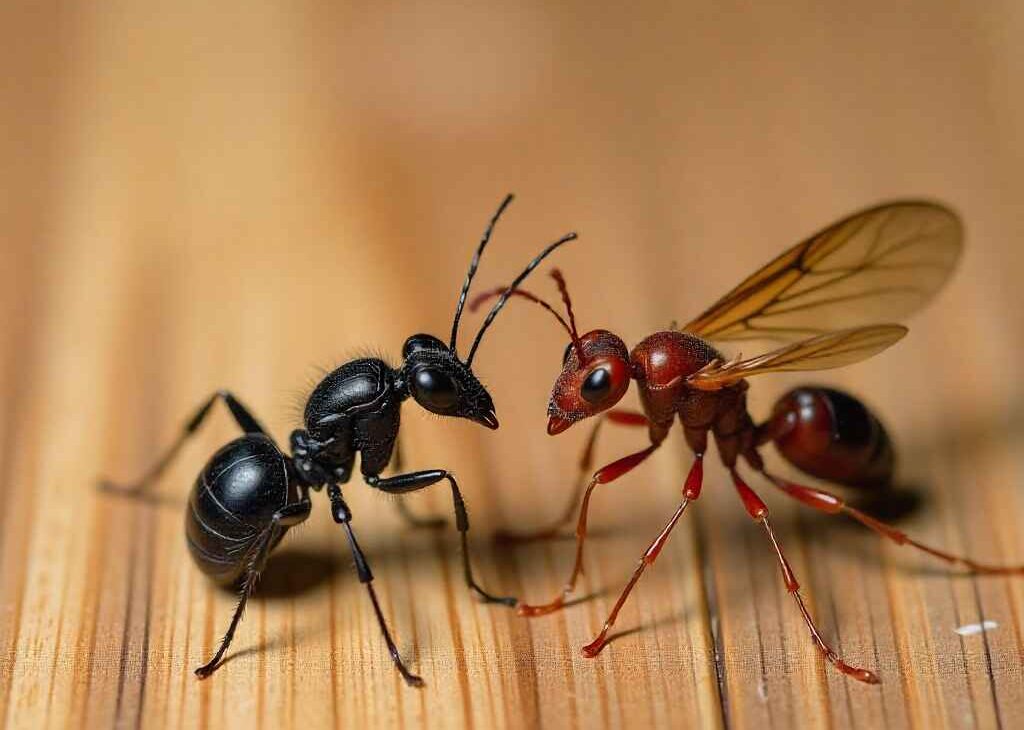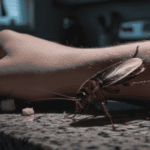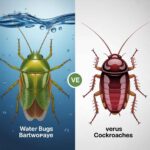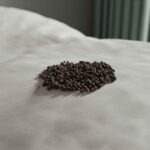Table of Contents
When you notice small winged insects flying around your home, it can be worrying. Are they termites or just flying ants? At first glance, these pests look almost identical, but understanding the difference between termites and flying ants can save you thousands of dollars in potential home repairs. In this guide, we’ll explore termites vs flying ants in detail, from their appearance and size to behavior, droppings, and prevention methods.
1. Understanding the Battle: Termites vs Flying Ants
If you’ve ever spotted a swarm of small, flying insects near a window or light source, you might assume they’re just ants. However, that’s often the first warning sign of termite activity. While both species swarm during warm months, termites are destructive wood-eaters, while flying ants are more of a nuisance.
Termites feed on cellulose, a natural compound found in wood, paper, and cardboard. Over time, this habit can weaken your home’s wooden structures. Flying ants, on the other hand, don’t eat wood; they simply nest inside it.
To make the right call, you need to know how to identify both pests.
2. Termites vs Flying Ants Pictures: What They Really Look Like
One of the easiest ways to identify each insect is through visual comparison. If you had both side by side, you’d see clear differences in body shape and features.
- Termites have straight antennae, equal-length wings, and a thick waist that looks uniform from head to tail.
- Flying ants have elbowed antennae, unequal wing lengths, and a pinched waist, giving them a more segmented look.
If you zoom in on termites vs flying ants, you’ll also notice that termite wings are often longer and more fragile, while ant wings are slightly darker and rest at an angle when folded.
Pro Tip: A simple flashlight inspection around windows or basement corners can often help you spot discarded wings, a common sign of recent swarming.
3. Termites vs Flying Ants: Size Spotting the Difference
When comparing termites vs flying ants‘ size, you’ll find subtle but important distinctions.
A typical termite swarmer (also called an alate) measures around ⅜ inch, while flying ants are slightly larger, ranging from ½ inch to ⅝ inch depending on species.
- Termite queens can live for decades and grow several inches long inside colonies.
- Flying ant queens, however, live for only a few years.
These size differences become more noticeable when you examine their wings: termite wings are uniform and about twice the body length, whereas ant wings differ in length; the front pair is noticeably longer than the back.
4. Flying Termites: What It Means When You See Them
Seeing flying termites (swarmers) in or around your home is a red flag. These winged termites are mature reproductives leaving the colony to establish new ones. They often appear after rain, during humid evenings, or around lights.
Once they mate, flying termites shed their wings and begin forming new colonies in hidden wooden structures — like your floor beams, walls, or foundation. If you notice discarded wings near windows or baseboards, it’s often the first visible sign of a termite infestation.
Step-by-Step: What to Do If You See Flying Termites
- Inspect the area, check around windowsills, basements, or wooden decks.
- Look for mud tubes or hollow-sounding wood, classic termite damage signs.
- Avoid DIY sprays; they kill visible swarmers but not the hidden colony.
- Contact a licensed pest control expert immediately for an inspection.
5. Termites vs Flying Ants Droppings: What Their Mess Reveals
Another clear difference lies in their droppings (also called frass).
- Termite droppings are small, wood-colored pellets that look like sand or sawdust. They are found near wall cracks, wooden furniture, or baseboards.
- Flying ant droppings are much finer and less uniform, often appearing as dark specks near nests or windows.
If you find tiny wood-colored piles under damaged wood, it’s almost always termite frass, evidence that they’ve been chewing through your structure from the inside.
6. Why Do Flying Ants Suddenly Appear?
Ever noticed flying ants suddenly appearing in your kitchen or near windows after a warm rain? It’s not random. Flying ants (alates) emerge during swarming season, typically in spring and summer, when conditions are perfect for mating and establishing new colonies.
They are drawn to light and humidity, so you might see them around:
- Ceiling lights or lamps
- Bathrooms and kitchens
- Basement windows
While they might look scary, flying ants don’t cause structural damage like termites. However, their sudden appearance indicates that an ant colony exists nearby, usually in walls, soil, or under floors.
7. How to Get Rid of Flying Ants or Termites
Whether you’re dealing with flying ants or termites, swift action is crucial. Let’s break it down step by step.
Step 1: Identify the Pest
Use the signs mentioned earlier, body shape, wings, and droppings, to determine whether it’s ants or termites.
Step 2: Remove Sources of Moisture
Both insects love damp environments. Fix leaky pipes, improve ventilation, and keep your foundation dry.
Step 3: Eliminate Food Sources
Store woodpiles away from your home and seal any cracks where moisture or pests could enter.
Step 4: Apply Treatments
For flying ants, use ant baits and non-repellent sprays near entry points.
For termites, apply liquid soil treatments, bait systems, or call for professional termite control. Termite infestations require deep treatment since colonies can be hidden underground or inside walls.
Step 5: Schedule Regular Inspections
Have your home checked annually by a certified pest control company. Preventive inspections are far cheaper than repairing termite damage later.
8. Preventing Future Infestations
To stop future termite or flying ant problems, follow these best practices:
- Keep firewood and mulch at least 15 inches away from your home’s foundation.
- Repair any roof leaks or drainage issues promptly.
- Use dehumidifiers in basements or crawl spaces.
- Seal entry points around pipes, vents, and electrical wiring.
- Get a termite protection plan if you live in a high-risk area.
9. Common Myths About Termites vs Flying Ants
Myth 1: “Flying ants and termites are the same.”
Fact: Termites cause structural damage; ants usually don’t.
Myth 2: “You can treat termites yourself.”
Fact: Most DIY termite treatments only kill visible swarmers, not the colony.
Myth 3: “If I don’t see termites, I don’t have them.”
Fact: Termites often stay hidden until damage is severe.
Summary Table: Quick Comparison
| Feature | Termites | Flying Ants |
|---|---|---|
| Antennae | Straight | Bent (Elbowed) |
| Waist | Straight | Pinched |
| Wings | Equal Length | Unequal Length |
| Body Type | Soft | Hard |
| Diet | Wood/Cellulose | Sugary foods & insects |
| Damage | Structural | Minimal |
| Droppings | Wood-colored pellets | Fine dark specks |
FAQS:
Q1: Should I worry if I see flying termites?
Yes, flying termites mean a nearby colony; unlike flying ants, they can damage wood fast.
Q2: Is there a difference between termites and ants?
Yes, termites vs flying ants differ in shape; termites eat wood, ants don’t.
Q3: Is it safe to sleep in a room with termites?
No, avoid it. Termites vs flying ants show hidden infestations in wood.
Q4: What are the first signs of termites?
Look for wings, mud tubes, or wood dust, clear termites vs flying ants clues.
Q5: What month are termites most active?
Termites vs flying ants swarm in spring and summer after rain.
Q6: Should I be worried if I see a termite in my house?
Yes, even one means trouble; termites vs flying ants can spread fast.
10. Final Thoughts: Why Identifying Termites vs Flying Ants Matters
When it comes to termites vs flying ants, knowing the difference can save your home from major damage and costly repairs. Both pests may look similar, but their habits and the risks they pose are entirely different.
If you ever notice swarming insects, discarded wings, or mud tubes, take it seriously. Schedule a professional termite inspection immediately. It’s the best way to protect your home and your peace of mind.














